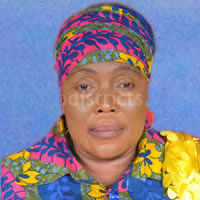Water and Sanitation
In 2014, 72.5% of the population of the Municipality had access to potable water and this increased to 81.7% in 2014. Sanitation coverage for 2015 was 33.2% and this reduced to 33% in 2016, 22.9 in 2016 and then increased by 0.6% to 23.5% in 2017.
The water and sanitation status of the municipality is generally low.
Water
Less than 50% of the populace has access to safe water namely treated water, boreholes and hand dug wells. As at December 2005, 47,682 representing 45% of the population had access to save water. This situation aggravates the guinea worm situation explained above. The save water sources are 179 boreholes, 44No. HDW (a few have pumps), and 6No communities enjoying treated water from Ghana Water Company Limited namely Savelugu, Janjori-Kukuo, Kanshegu, Duko, Diare and Sahakpalugu . Table 7 in the pdf file attached depicts potable water situation.
Two small town systems have been completed and would soon be put in use at Nanton and Diare. A Mechanised system is commissioned at Kpatuli.
Sanitation
Similar to water, sanitation is poor in the municipality. Less than 20% of the population have access to safe excreta disposal. Sanitation facilities include VIP toilets, septic tank and communal KVIP. As at December 2005, 16,106 representing 15.2% of the population had access to save excreta disposal. A few communities and households have waste disposal sites and soakaways. The poor sanitation situation is further aggravated by inadequate environmental health staffing. The unit is made up of 19 staff.
Key Problems/Constraints on Water and Sanitation
1. Inadequate environmental health staff
2. Management of public toilets
3. Attitudinal change
4. Inadequate Logistical support to environmental health personnel
Date Created : 11/18/2017 8:18:36 AM





 facebook
facebook X (twitter)
X (twitter) Youtube
Youtube +233 593 831 280
+233 593 831 280 0800 430 430
0800 430 430 GPS: GE-231-4383
GPS: GE-231-4383 info@ghanadistricts.com
info@ghanadistricts.com Box GP1044, Accra, Ghana
Box GP1044, Accra, Ghana